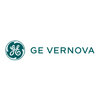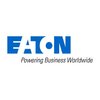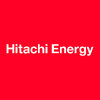Filter interviews by
NTPC Interview Questions and Answers
203 Interview questions
A transformer is an electrical device that transfers electrical energy between circuits through electromagnetic induction.
Transformers are used to increase (step-up) or decrease (step-down) voltage levels.
Commonly found in power distribution systems to manage voltage levels.
Example: A step-down transformer reduces high voltage from power lines to a safer level for homes.
They consist of primary and secondary coils ...
A motor is a device that converts electrical energy into mechanical energy to perform work.
Types of motors include AC motors, DC motors, and stepper motors.
AC motors are commonly used in household appliances like fans and refrigerators.
DC motors are often found in toys and small gadgets due to their simplicity.
Stepper motors are used in precision applications like 3D printers and CNC machines.
Motors operate based ...
A relay is an electromechanical switch that opens or closes circuits based on an electrical signal.
Relays are used to control high voltage devices with low voltage signals.
Common applications include automotive systems, home appliances, and industrial machinery.
A typical relay consists of an electromagnet, armature, and contacts.
For example, a relay can turn on a motor when a button is pressed.
Relays can be found ...
Handling criticism involves active listening, self-reflection, and constructive response to foster improvement and collaboration.
Listen actively to understand the criticism without interrupting.
Reflect on the feedback to identify any valid points for personal or professional growth.
Respond constructively by acknowledging the feedback and discussing potential solutions.
Seek clarification if the criticism is vague o...
High voltage transmission lines carry electricity over long distances with minimal energy loss, while low voltage transmission lines distribute electricity to homes and businesses.
High voltage transmission lines operate at voltages above 69 kV, while low voltage transmission lines operate at voltages below 69 kV.
High voltage transmission lines are used for long-distance power transmission, while low voltage transm...
A thermal power plant generates electricity by converting heat energy into electrical energy.
Fuel (such as coal, natural gas, or oil) is burned to produce heat
The heat is used to boil water and produce steam
The steam drives a turbine connected to a generator, which produces electricity
The electricity is then transmitted through power lines to homes and businesses
I have over 5 years of experience as a Site Supervisor, managing diverse teams and ensuring project completion on time and within budget.
Managed a team of 20 workers on a commercial construction site, ensuring safety protocols were followed.
Successfully completed a residential project 2 weeks ahead of schedule by optimizing workflow.
Conducted regular site inspections to ensure compliance with building codes and re...
Heat exchangers are devices used to transfer heat between two or more fluids, without mixing them together.
Shell and tube heat exchanger
Plate heat exchanger
Double pipe heat exchanger
Finned tube heat exchanger
Spiral heat exchanger
Different types of hoses used in firefighting include attack hoses, supply hoses, and booster hoses.
Attack hoses are used to deliver water or foam to extinguish fires.
Supply hoses are used to bring water from a water source to the fire scene.
Booster hoses are smaller in diameter and used for small fires or for mop-up operations.
Different types of couplings include rigid, flexible, sleeve, and clamp couplings.
Rigid couplings do not allow for any misalignment between shafts
Flexible couplings can accommodate slight misalignments and vibrations
Sleeve couplings are simple and inexpensive, but not suitable for high torque applications
Clamp couplings use screws or clamps to secure the connection between shafts
NTPC Interview Experiences
166 interviews found
I applied via LinkedIn
My aptitude test should be taken from Math Science.
(4 Questions)
- Q1. Electrical engineering
- Q2. What is a transformer?
- Ans.
A transformer is an electrical device that transfers electrical energy between two or more circuits through electromagnetic induction.
Transformers are used to increase or decrease voltage levels in electrical circuits.
They consist of two or more coils of wire wrapped around a core made of ferromagnetic material.
Examples of transformers include power transformers used in electrical substations and distribution transform...
- Q3. How does a thermal power plant work ?
- Ans.
A thermal power plant generates electricity by converting heat energy into electrical energy.
Fuel (such as coal, natural gas, or oil) is burned to produce heat
The heat is used to boil water and produce steam
The steam drives a turbine connected to a generator, which produces electricity
The electricity is then transmitted through power lines to homes and businesses
- Q4. What is the difference between high voltage transmission line and low voltage transmission line?
- Ans.
High voltage transmission lines carry electricity over long distances with minimal energy loss, while low voltage transmission lines distribute electricity to homes and businesses.
High voltage transmission lines operate at voltages above 69 kV, while low voltage transmission lines operate at voltages below 69 kV.
High voltage transmission lines are used for long-distance power transmission, while low voltage transmissio...
I appeared for an interview in May 2025, where I was asked the following questions.
- Q1. Driscrib your Final year project.
- Q2. Working principle of Machine and Transformar? Relay and Circuit breakers function and different.
- Ans.
Machines convert energy, transformers change voltage levels, relays control circuits, and circuit breakers protect against overloads.
Machines operate on mechanical principles, converting energy from one form to another (e.g., electric motor).
Transformers use electromagnetic induction to change voltage levels in AC circuits (e.g., step-up and step-down transformers).
Relays are electrically operated switches that control...
- Q3. Asking about my previous company experience which I joined jast for two months, and left because of NTPC.🥲
Interview Preparation Tips
I applied via Company Website and was interviewed in Dec 2024. There were 2 interview rounds.
The first round included reasoning ability, verbal ability, and aptitude tests.
(2 Questions)
- Q1. What is your basic introduction, and what are your thoughts on computer networking questions?
- Q2. What are Computer networks protocols. and server hardware questions
Interview Preparation Tips
- Computer Networking
I applied via Campus Placement and was interviewed in Aug 2024. There were 4 interview rounds.
Aptitude test its very nice test for job test class test
Aptitude test its nice attitude test job test class test work test
Assignment test is the one topic and only one subject assignment test
(3 Questions)
- Q1. NTPC company have a water
- Q2. Material coal chamber
- Q3. Water cycle water supply
Interview Preparation Tips
I applied via Company Website
(4 Questions)
- Q1. Power plant related
- Q2. Theory of machine
- Ans.
Theory of machine is a branch of engineering that deals with the study of machines and their mechanisms.
Theory of machine focuses on understanding the principles behind the operation of machines.
It involves studying the design, construction, and operation of machines.
Examples include studying the movement of gears in a gearbox or the operation of a piston in an engine.
- Q3. Function of PA fan
- Ans.
PA fan stands for Primary Air fan, which is used in power plants to supply air for combustion in the boiler.
Supplies primary air for combustion in the boiler
Helps in maintaining proper air-fuel ratio for efficient combustion
Assists in controlling the temperature and pressure inside the boiler
Improves the overall efficiency of the boiler
Examples: FD fan in a power plant
- Q4. ID fan and pa fan difference
- Ans.
ID fan is used to control the draft in the furnace while PA fan is used to supply combustion air to the furnace.
ID fan is located at the outlet of the furnace while PA fan is located at the inlet of the furnace.
ID fan helps in maintaining negative pressure inside the furnace while PA fan helps in supplying air for combustion.
ID fan is used to extract flue gases from the furnace while PA fan is used to supply primary an...
I appeared for an interview in May 2025, where I was asked the following questions.
- Q1. What are your reasons for wanting to work for this company?
- Ans.
I admire this company's commitment to innovation and its strong values, which align with my professional goals and personal beliefs.
The company's reputation for innovation in the industry, such as its recent product launch that revolutionized patient care.
Alignment with the company's core values, particularly its focus on sustainability and community engagement, which resonates with my personal beliefs.
Opportunities fo...
- Q2. How do you believe you would fit into our company?
- Ans.
I believe my skills and values align well with your company's mission and culture, fostering collaboration and innovation.
Strong alignment with company values: I resonate with your commitment to integrity and excellence, as demonstrated in my previous role where I led a team to achieve a 20% increase in customer satisfaction.
Proven leadership experience: In my last position, I managed a diverse team, promoting a cultur...
(5 Questions)
- Q1. How many types of exchangers are there?
- Ans.
Heat exchangers are devices used to transfer heat between two or more fluids, without mixing them together.
Shell and tube heat exchanger
Plate heat exchanger
Double pipe heat exchanger
Finned tube heat exchanger
Spiral heat exchanger
- Q2. What is preeming called?
- Ans.
Preeming is called grooming in the fire service.
Preeming is the act of cleaning and maintaining equipment in the fire service.
Grooming ensures that all equipment is in proper working order and ready for use during emergencies.
Examples of grooming tasks include cleaning and inspecting hoses, nozzles, and other firefighting gear.
- Q3. How many types of hydrants are there?
- Ans.
Different types of hydrants include wet barrel hydrants, dry barrel hydrants, and post hydrants.
Wet barrel hydrants are commonly used in warmer climates and have the valve at the top of the hydrant.
Dry barrel hydrants are typically used in colder climates and have the valve at the bottom of the hydrant to prevent freezing.
Post hydrants are mounted on a post above ground level and are often used in rural areas or parks.
- Q4. How many types of couplings are there?
- Ans.
Different types of couplings include rigid, flexible, sleeve, and clamp couplings.
Rigid couplings do not allow for any misalignment between shafts
Flexible couplings can accommodate slight misalignments and vibrations
Sleeve couplings are simple and inexpensive, but not suitable for high torque applications
Clamp couplings use screws or clamps to secure the connection between shafts
- Q5. How many types of hose are there?
- Ans.
Different types of hoses used in firefighting include attack hoses, supply hoses, and booster hoses.
Attack hoses are used to deliver water or foam to extinguish fires.
Supply hoses are used to bring water from a water source to the fire scene.
Booster hoses are smaller in diameter and used for small fires or for mop-up operations.
Interview Preparation Tips
I appeared for an interview in Apr 2025, where I was asked the following questions.
- Q1. Power generation and Transformers
- Q2. Plant basic information
- Q3. Circuit breakers
- Q4. Electrical wiring
- Q5. Electrical repairs
- Q6. Basic electrical
I appeared for an interview in Apr 2025, where I was asked the following questions.
- Q1. What is ac
- Ans.
AC, or alternating current, is an electric current that reverses direction periodically, commonly used in power systems.
AC voltage varies sinusoidally over time, typically represented as a sine wave.
Commonly used in household power supply, e.g., 120V or 240V AC.
AC is more efficient for long-distance power transmission compared to DC.
Transformers can easily step up or step down AC voltage levels.
Examples of AC sources i...
- Q2. What are doing motor
- Ans.
A motor is a device that converts electrical energy into mechanical energy to perform work.
Types of motors include AC motors, DC motors, and stepper motors.
AC motors are commonly used in household appliances like fans and refrigerators.
DC motors are often found in toys and small gadgets due to their simplicity.
Stepper motors are used in precision applications like 3D printers and CNC machines.
Motors operate based on el...
- Q3. What is relay
- Ans.
A relay is an electromechanical switch that opens or closes circuits based on an electrical signal.
Relays are used to control high voltage devices with low voltage signals.
Common applications include automotive systems, home appliances, and industrial machinery.
A typical relay consists of an electromagnet, armature, and contacts.
For example, a relay can turn on a motor when a button is pressed.
Relays can be found in sa...
- Q4. What is transfarmer
- Ans.
A transformer is an electrical device that transfers electrical energy between circuits through electromagnetic induction.
Transformers are used to increase (step-up) or decrease (step-down) voltage levels.
Commonly found in power distribution systems to manage voltage levels.
Example: A step-down transformer reduces high voltage from power lines to a safer level for homes.
They consist of primary and secondary coils wound...
- Q5. What is Switch gears
- Ans.
Switchgear refers to electrical devices that control, protect, and isolate electrical equipment in power systems.
Switchgear includes circuit breakers, fuses, and disconnect switches.
It is used in substations, industrial plants, and commercial buildings.
Examples include air-insulated switchgear (AIS) and gas-insulated switchgear (GIS).
Switchgear ensures safety by interrupting fault currents and isolating faulty equipmen...
Interview Preparation Tips
I applied via Naukri.com and was interviewed in Jun 2024. There was 1 interview round.
(3 Questions)
- Q1. About store management
- Q2. Any thing about store management
- Ans.
Store management involves overseeing daily operations, staff management, inventory control, and customer service.
Daily operations include opening and closing procedures, ensuring cleanliness and organization, and monitoring sales.
Staff management involves hiring, training, scheduling, and performance evaluations.
Inventory control includes ordering products, managing stock levels, and conducting regular audits.
Customer ...
- Q3. I am one of those who work with great confidence, and I am proud that my presentation will not cause any harm to the company.
Interview Preparation Tips
Top trending discussions






NTPC Interview FAQs
Some of the top questions asked at the NTPC interview -
The duration of NTPC interview process can vary, but typically it takes about less than 2 weeks to complete.
Tell us how to improve this page.
NTPC Interviews By Designations
- NTPC Executive Trainee Interview Questions
- NTPC Supervisor Interview Questions
- NTPC Engineer Interview Questions
- NTPC Safety Officer Interview Questions
- NTPC Electrical Engineer Interview Questions
- NTPC Intern Interview Questions
- NTPC Operations Executive Interview Questions
- NTPC Trainee Interview Questions
- Show more
Interview Questions for Popular Designations
Overall Interview Experience Rating
based on 131 interview experiences
Difficulty level
Duration
Interview Questions from Similar Companies
NTPC Reviews and Ratings
based on 1.6k reviews
Rating in categories
|
Senior Manager
141
salaries
| ₹17.3 L/yr - ₹56 L/yr |
|
Deputy General Manager
93
salaries
| ₹19 L/yr - ₹70 L/yr |
|
Engineer
77
salaries
| ₹3.5 L/yr - ₹8.9 L/yr |
|
Executive
72
salaries
| ₹7.2 L/yr - ₹15 L/yr |
|
Manager
70
salaries
| ₹17.9 L/yr - ₹44.5 L/yr |

Adani Group

Tata Power

GE Vernova

Eaton
- Home >
- Interviews >
- NTPC Interview Questions













